Grants and Funding for non-profits in Canada
Canada's non-profit organizations (NPO) benefit from grants and funding that support innovation and sustainability
Canadian non-profits benefit from a wide range of grants and funding programs designed to support their mission-driven initiatives and community services. These financial aids enable organizations to enhance their operations, expand their outreach, and ensure sustainable growth in addressing various social, environmental, and cultural needs.
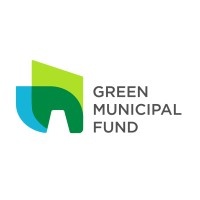
Capital project: Community Energy Systems
Green Municipal Fund (GMF)- Maximum amount : 10,000,000 $
- Up to 80% of project cost
- Utilities
- Construction
- Administrative and support, waste management and remediation services
- Public administration
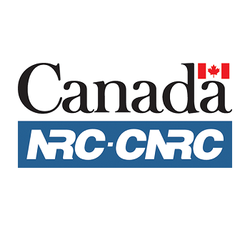
Industrial Research Assistance Program (IRAP) – AI Assist
National Research Council Canada (NRC)- From $750,000 to $10,500,000
- Up to 100% of project cost
- Manufacturing
- Information and cultural industries
- Professional, scientific and technical services
- Educational services
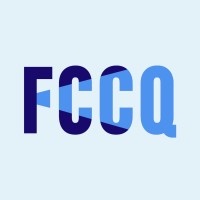
Accueillez un stagiaire
Fédération des chambres de commerce du Québec (FCCQ)- Maximum amount : 7,000 $
- Up to 50% of project cost
- All industries

Strategic Innovation Fund (SIF)
Innovation, Science and Economic Development Canada (ISED)- Up to 50% of project cost
- Manufacturing
- Transportation and warehousing
- Information and cultural industries
- Professional, scientific and technical services
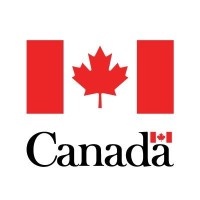
Green Industrial Facilities and Manufacturing Program (GIFMP) — Industrial Facility Track
Natural Resources Canada (NRCan)- Minimum amount : 40,000 $
- Up to 50% of project cost
- Manufacturing
Discover Funding for Non-Profits
Find Financial Support Tailored for Non-Profit Organizations
Grants for non-profits provide essential funding for organizations to innovate and adopt sustainable practices. These financial aids support the growth and resilience of the non-profit sector.
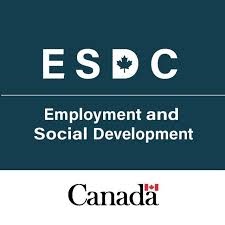
Canada Summer Jobs (CSJ)
Employment and Social Development Canada (ESDC)- Up to 50% of project cost
- All industries

Incentives for medium and heavy-duty zero-emission vehicles (iMHZEV) Program
Transport Canada- Maximum amount : 1,000,000 $
- Up to 75% of project cost
- Retail trade
- Transportation and warehousing
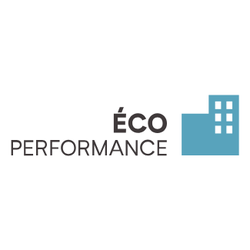
ÉcoPerformance — Recommissioning of building mechanical systems
Gouvernement du Québec- Maximum amount : 100,000 $
- Up to 75% of project cost
- Agriculture, forestry, fishing and hunting
- Manufacturing
- Educational services
- Other services (except public administration)

Green Freight Program — Assess and Retrofit
Natural Resources Canada (NRCan)- Maximum amount : 250,000 $
- Up to 75% of project cost
- Transportation and warehousing

AgriScience Program – Clusters
Agriculture and Agri-Food Canada (AAFC)- From $5,000,000 to $15,000,000
- Up to 70% of project cost
- Agriculture, forestry, fishing and hunting
Discover how much grant funding is available for your business
Subsidize your projects with grants!
Use our free grant estimator to quickly identify the available grant amounts for which your company may be eligible.

NGen — AI For Manufacturing Challenge (AI4M)
Next Generation Manufacturing Canada (NGen)- From $1,500,000 to $3,200,000
- Up to 40% of project cost
- Manufacturing
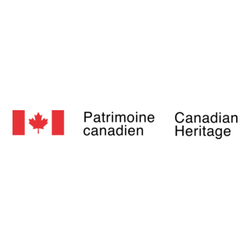
International Single Sport Events - Hosting Program
Canadian Heritage- No Condition
- Arts, entertainment and recreation
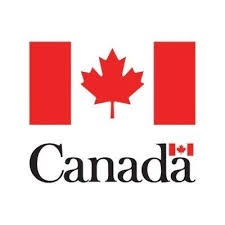
Canada Public Transit Fund
Housing, Infrastructure and Communities Canada- No Condition
- Construction
- Transportation and warehousing
- Public administration

Workforce Training Measure (MFOR)
Gouvernement du Québec- Maximum amount : 100,000 $
- Up to 50% of project cost
- All industries

Creative Export Canada (CEC) — Export-Ready Stream
Canadian Heritage- Maximum amount : 2,500,000 $
- Up to 75% of project cost
- Information and cultural industries
- Arts, entertainment and recreation
Access over 4000 different funding opportunities
Try the helloDarwin platform today and find programs that fit your needs
The helloDarwin application makes it easy to unlock grants so your business can grow faster—with less hassle and more impact.

NovaScience Program - Support for projects in scientific culture and innovation
Gouvernement du Québec- Maximum amount : 200,000 $
- Up to 80% of project cost
- Information and cultural industries
- Professional, scientific and technical services
- Educational services

Green Freight Program — Repower and Replace
Natural Resources Canada (NRCan)- Maximum amount : 5,000,000 $
- Up to 50% of project cost
- Transportation and warehousing
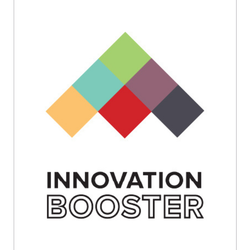
CFIN Innovation Booster
Canadian Food Innovation Network (CFIN)- From $20,000 to $100,000
- Up to 50% of project cost
- Accommodation and food services

Export and cultural visibility support program
Société de développement des entreprises culturelles (SODEC)- Maximum amount : 160,000 $
- Up to 50% of project cost
- Information and cultural industries

Quebec Initiative for Construction 4.0 — Stream 1
Groupe BIM du Québec (GBQ)- Maximum amount : 100,000 $
- Up to 50% of project cost
- Construction
Download the official 2026 grants guide
Access key insights to maximize your grant funding opportunities
Understand the different funding programs and find the best options for your business.

Ecocamionnage Program — Logistics Project Component
Minister of Transport and Sustainable Mobility of Quebec- Up to 15% of project cost
- Transportation and warehousing

Community Organization Support Program (PSOC)
Department of Health and Human Services- Up to 100% of project cost
- Health care and social assistance

Mitacs Accelerate
Mitacs- From $7,500 to $15,000
- Professional, scientific and technical services
- Educational services
- Health care and social assistance

APCHQ — Get financing through the Canada Greener Affordable Housing program: Retrofit Funding for multi-unit residential buildings
Association des professionnels de la construction et de l’habitation du Québec (APCHQ)- Maximum amount : 170,000 $
- Up to 80% of project cost
- Real estate and rental and leasing
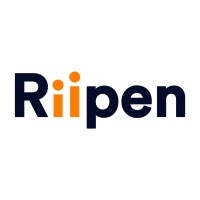
Riipen — Level UP
Riipen- No Condition
- All industries
Find tailored funding for your business
Discover more grants on the helloDarwin platform
Look through over 4,000 grants, tax credits, loans and more financial aid on the helloDarwin application.

Mitacs Accelerate International
Mitacs- From $15,000 to $15,000
- Up to 50% of project cost
- All industries

Canada Service Corps – Service Placements Regional Stream
Employment and Social Development Canada (ESDC)- Maximum amount : 3,000,000 $
- Educational services
- Health care and social assistance
- Arts, entertainment and recreation
- Other services (except public administration)
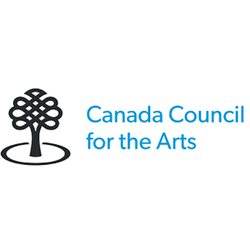
International outreach — Travel
Canada Council for the Arts (CCA)- Maximum amount : 30,000 $
- Arts, entertainment and recreation

Employee Wage Subsidy
Gouvernement du Québec- No Condition
- All industries

Global Innovation Clusters
Innovation Canada- No Condition
- Manufacturing
- Information and cultural industries
- Professional, scientific and technical services
Tired of scrolling through all these programs?
Filter grants relevant for your company on the helloDarwin platform
Sort over 4,000 business funds by your industry, projects and location with helloDarwin's free app.

Creative Export Canada (CEC) — Export Development Stream (EDS)
Canadian Heritage- From $15,000 to $90,000
- Up to 75% of project cost
- Arts, entertainment and recreation

Technology and Business Demonstration
Hydro-Québec- Maximum amount : 500,000 $
- Up to 75% of project cost
- Utilities
- Manufacturing
- Professional, scientific and technical services

AgriCompetitiveness Program
Agriculture and Agri-Food Canada (AAFC)- Maximum amount : 5,000,000 $
- Up to 70% of project cost
- Agriculture, forestry, fishing and hunting

NovaScience Program — Support for the position of innovation and commercialization manager
Ministère de l'économie, de l'innovation et de l'énergie du Québec (MEIE)- Maximum amount : 75,000 $
- Up to 50% of project cost
- Professional, scientific and technical services
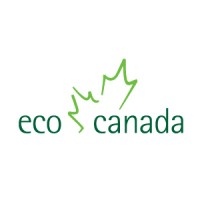
ECO Canada — Student Work Placement Program
ECO Canada- Maximum amount : 5,000 $
- Up to 50% of project cost
- Professional, scientific and technical services
- Educational services
Discover Funding for Non-Profits
Find Financial Support Tailored for Non-Profit Organizations
Grants for non-profits provide essential funding for organizations to innovate and adopt sustainable practices. These financial aids support the growth and resilience of the non-profit sector.

Program Supporting the Development of Tourist Attractions — Stream 2
Investissement Québec (IQ)- From $100,000 to $5,000,000
- Up to 50% of project cost
- Accommodation and food services

Active Transportation Fund
Housing, Infrastructure and Communities Canada- Maximum amount : 50,000,000 $
- Transportation and warehousing
- Educational services
- Health care and social assistance
- Arts, entertainment and recreation

Employment Integration Program for Immigrants and Visible Minorities
Gouvernement du Québec- Maximum amount : 5,000 $
- Up to 60% of project cost
- All industries

Program Supporting the Development of Tourist Attractions — Stream 1
Investissement Québec (IQ)- From $150,000 to $5,000,000
- Up to 50% of project cost
- Arts, entertainment and recreation
- Accommodation and food services

Financial Compensation Program for the Restaurant Sector
Revenu Québec- No Condition
- Accommodation and food services
Discover how much grant funding is available for your business
Subsidize your projects with grants!
Use our free grant estimator to quickly identify the available grant amounts for which your company may be eligible.
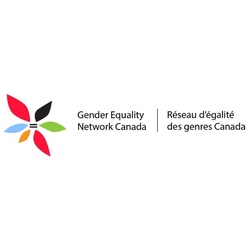
Equality for Sex, Sexual Orientation, Gender Identity and Expression Program
Women and Gender Equality Canada- No Condition
- Educational services
- Health care and social assistance
- Other services (except public administration)
- Public administration
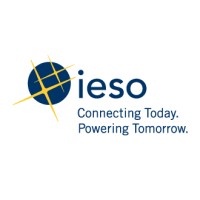
Expanded Energy Management Program
Independent Electricity System Operator (IESO)- Maximum amount : 250,000 $
- Up to 50% of project cost
- Agriculture, forestry, fishing and hunting
- Mining, quarrying, and oil and gas extraction
- Utilities
- Construction
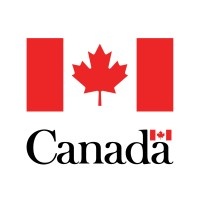
Crime Prevention Action Fund (CPAF)
Public Safety Canada (PSC)- Maximum amount : 7,500,000 $
- Up to 95% of project cost
- Educational services
- Health care and social assistance
- Other services (except public administration)
- Public administration

Sports Support Program - Community Sports for All Initiative
Canadian Heritage- No Condition
- Arts, entertainment and recreation

AgriAssurance Program – National Industry Association Component
Agriculture and Agri-Food Canada (AAFC)- Maximum amount : 1,000,000 $
- Up to 75% of project cost
- Agriculture, forestry, fishing and hunting
Access over 4000 different funding opportunities
Try the helloDarwin platform today and find programs that fit your needs
The helloDarwin application makes it easy to unlock grants so your business can grow faster—with less hassle and more impact.

Program for efficiency in maritime, air, and rail transport - Infrastructure and equipment component
Minister of Transport and Sustainable Mobility of Quebec- Maximum amount : 4,000,000 $
- Up to 75% of project cost
- Transportation and warehousing

Innovative Solutions Canada — Testing stream
Innovation Canada- No Condition
- All industries

XLerate Program
Independent Electricity System Operator (IESO)- Maximum amount : 15,000,000 $
- Up to 75% of project cost
- Manufacturing
- Health care and social assistance
- Public administration

Mitacs — Elevate
Mitacs- From $30,000 to $120,000
- Up to 50% of project cost
- Professional, scientific and technical services

African Swine Fever Industry Preparedness Program (ASFIPP) - Welfare Slaughter and Disposal Stream
Agriculture and Agri-Food Canada (AAFC)- Maximum amount : 1,000,000 $
- Up to 85% of project cost
- Agriculture, forestry, fishing and hunting
- Manufacturing
Download the official 2026 grants guide
Access key insights to maximize your grant funding opportunities
Understand the different funding programs and find the best options for your business.

AgriRisk Initiatives - Research and Development Contribution Funding
Agriculture and Agri-Food Canada (AAFC)- Maximum amount : 2,500,000 $
- Agriculture, forestry, fishing and hunting

AgriRisk Initiatives - Microgrants Funding
Agriculture and Agri-Food Canada (AAFC)- Maximum amount : 2,500,000 $
- Up to 85% of project cost
- Agriculture, forestry, fishing and hunting

Protein Industries Canada — Technology Leadership
Protein Industries Canada- Up to 45% of project cost
- Agriculture, forestry, fishing and hunting
- Manufacturing

AgriDiversity Program
Agriculture and Agri-Food Canada (AAFC)- Maximum amount : 1,000,000 $
- Up to 70% of project cost
- Agriculture, forestry, fishing and hunting

Substance Use and Addictions Program (SUAP)
Health Canada- No Condition
- Educational services
- Health care and social assistance
- Other services (except public administration)
- Public administration
Find tailored funding for your business
Discover more grants on the helloDarwin platform
Look through over 4,000 grants, tax credits, loans and more financial aid on the helloDarwin application.
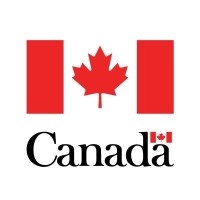
Hire a permanent foreign worker
Refugees and Citizenship Canada- No Condition
- All industries

Concertation pour l’emploi — Human resources management support
Gouvernement du Québec- Maximum amount : 4,800 $
- Up to 40% of project cost
- All industries

Humanitarian Workforce (HWF) - COVID-19 and other large-scale emergencies
Public Safety Canada (PSC)- Up to 100% of project cost
- Health care and social assistance
- Other services (except public administration)
- Public administration

AgriScience Program – Projects
Agriculture and Agri-Food Canada (AAFC)- Maximum amount : 5,000,000 $
- Up to 70% of project cost
- Agriculture, forestry, fishing and hunting
- Manufacturing
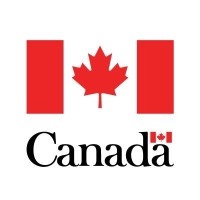
Rail Safety Improvement Program (RSIP) - Research and Education Component
Transport Canada- Maximum amount : 1,000,000 $
- Up to 50% of project cost
- Transportation and warehousing
- Educational services
- Public administration
Tired of scrolling through all these programs?
Filter grants relevant for your company on the helloDarwin platform
Sort over 4,000 business funds by your industry, projects and location with helloDarwin's free app.
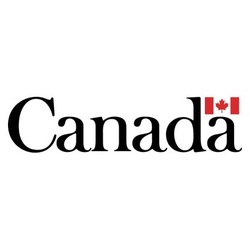
Temporary Foreign Worker Program (TFW)
Government of Canada- No Condition
- Agriculture, forestry, fishing and hunting
- Educational services
- Health care and social assistance

Enhanced Road Safety Transfer Payment Program (ERSTPP)
Transport Canada- Maximum amount : 10,000,000 $
- Up to 75% of project cost
- Transportation and warehousing
- Professional, scientific and technical services
- Educational services
- Other services (except public administration)

Age Well at Home (AWAH) - In-Home Support Pilot Project Stream
Employment and Social Development Canada (ESDC)- From $300,000 to $800,000
- Educational services
- Health care and social assistance
- Other services (except public administration)
- Public administration

Maritime, Air, and Rail Transportation Efficiency Program - Pilot Project Component
Minister of Transport and Sustainable Mobility of Quebec- Maximum amount : 1,000,000 $
- Up to 75% of project cost
- Transportation and warehousing

Roulez Vert — Rebate for charging station at work
Gouvernement du Québec- Maximum amount : 49,000 $
- Up to 50% of project cost
- Utilities
- Construction
- Transportation and warehousing
- Professional, scientific and technical services
Discover Funding for Non-Profits
Find Financial Support Tailored for Non-Profit Organizations
Grants for non-profits provide essential funding for organizations to innovate and adopt sustainable practices. These financial aids support the growth and resilience of the non-profit sector.

Fonds Écoleader — Specific implementation support
Fonds d'action Québécois pour le développement durable (FAQDD)- Maximum amount : 80,000 $
- Up to 75% of project cost
- All industries

Canada Book Fund (CBF) — Support for Organizations — Internships
Canadian Heritage- Maximum amount : 22,500 $
- Up to 75% of project cost
- Information and cultural industries

Magnet — Outcome Campus Connect
Magnet- Maximum amount : 7,000 $
- Educational services

Additional support for the circulation of shows
Société de développement des entreprises culturelles (SODEC)- Maximum amount : 275,000 $
- Information and cultural industries
- Arts, entertainment and recreation

Economic development program to help revitalize territories (DEPART)
Investissement Québec (IQ)- No Condition
- Manufacturing
- Information and cultural industries
- Accommodation and food services
Discover how much grant funding is available for your business
Subsidize your projects with grants!
Use our free grant estimator to quickly identify the available grant amounts for which your company may be eligible.

Arts Abroad — Residencies
Canada Council for the Arts (CCA)- Maximum amount : 20,000 $
- Information and cultural industries
- Arts, entertainment and recreation

Supporting Artistic Practice — Sector Innovation and Development
Canada Council for the Arts (CCA)- Maximum amount : 50,000 $
- Arts, entertainment and recreation

Engage and Sustain — Artistic Institutions
Canada Council for the Arts (CCA)- Up to 25% of project cost
- Arts, entertainment and recreation

Supporting Artistic Practice — Support Organizations
Canada Council for the Arts (CCA)- Up to 60% of project cost
- Arts, entertainment and recreation

Arts Across Canada — Travel
Canada Council for the Arts (CCA)- Maximum amount : 30,000 $
- Arts, entertainment and recreation
Access over 4000 different funding opportunities
Try the helloDarwin platform today and find programs that fit your needs
The helloDarwin application makes it easy to unlock grants so your business can grow faster—with less hassle and more impact.

Arts Across Canada — Representation and Promotion
Canada Council for the Arts (CCA)- Maximum amount : 30,000 $
- Arts, entertainment and recreation

Strategic Funds and Initiatives — Market Access Strategy
Canada Council for the Arts (CCA)- Maximum amount : 60,000 $
- Information and cultural industries
- Arts, entertainment and recreation

Green Industrial Facilities and Manufacturing Program — Energy Efficiency Solutions Track
Natural Resources Canada (NRCan)- Maximum amount : 20 $
- Up to 75% of project cost
- Manufacturing
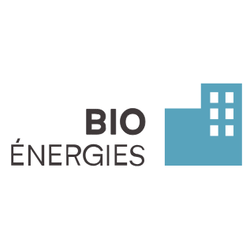
Bioénergies — Analysis
Environnement Québec (MELCC)- No Condition
- Manufacturing

Market Development Program for Turkey and Chicken
Agriculture and Agri-Food Canada (AAFC)- Up to 80% of project cost
- Agriculture, forestry, fishing and hunting
- Manufacturing
- Retail trade
- Accommodation and food services
Download the official 2026 grants guide
Access key insights to maximize your grant funding opportunities
Understand the different funding programs and find the best options for your business.

Support program for the development of reserved designations and promotional terms — Component 1
Ministry of Agriculture, Fisheries and Food (MAPAQ)- Maximum amount : 150,000 $
- Up to 75% of project cost
- Agriculture, forestry, fishing and hunting

REGI — Business Scale-up and Productivity — CED (QC) – Private sector
Canada Economic Development for Quebec Regions (CED)- Up to 50% of project cost
- All industries

Canadian Agricultural Strategic Priorities Program
Agriculture and Agri-Food Canada (AAFC)- Maximum amount : 1,000,000 $
- Up to 50% of project cost
- Agriculture, forestry, fishing and hunting

Quebec Initiative for Construction 4.0 — Stream 2
Groupe BIM du Québec (GBQ)- Up to 50% of project cost
- Construction
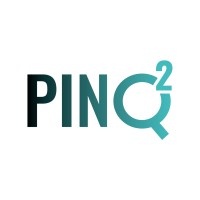
Digital and Quantum Innovation Platform — PINQ²
Plateforme d'Innovation Numérique et Quantique- No Condition
- Manufacturing
- Information and cultural industries
- Professional, scientific and technical services
- Educational services
Find tailored funding for your business
Discover more grants on the helloDarwin platform
Look through over 4,000 grants, tax credits, loans and more financial aid on the helloDarwin application.

Maritime, Air, and Rail Transportation Efficiency Program - Studies Component
Minister of Transport and Sustainable Mobility of Quebec- Maximum amount : 250,000 $
- Up to 75% of project cost
- Transportation and warehousing

Offensive Tr@ns Num
Association for the Development of Research and Innovation of Quebec (ADRIQ)- Maximum amount : 25,000 $
- Up to 50% of project cost
- Manufacturing

Bioénergies — Implementation
Environnement Québec (MELCC)- Maximum amount : 5,000,000 $
- Up to 75% of project cost
- Agriculture, forestry, fishing and hunting
- Manufacturing
- Retail trade
- Educational services
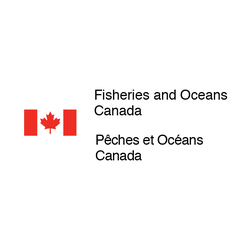
Canada Nature Fund for Aquatic Species at Risk (CNFASAR)
Fisheries and Oceans Canada (DFO)- From $50,000 to $1,000,000
- Agriculture, forestry, fishing and hunting
- Professional, scientific and technical services
- Educational services
- Other services (except public administration)

BioTalent — Student Work Placement Program (SWPP)
BioTalent Canada- Maximum amount : 7,000 $
- Up to 70% of project cost
- Professional, scientific and technical services
- Educational services
- Health care and social assistance
Tired of scrolling through all these programs?
Filter grants relevant for your company on the helloDarwin platform
Sort over 4,000 business funds by your industry, projects and location with helloDarwin's free app.

Mitacs — Business Strategy Internship
Mitacs- Maximum amount : 10,000 $
- All industries

SIF — Collaborations and Networks projects
Innovation Canada- No Condition
- Manufacturing
- Information and cultural industries
- Professional, scientific and technical services
- Educational services

Arts Abroad — Circulation and Touring
Canada Council for the Arts (CCA)- Maximum amount : 200,000 $
- Up to 50% of project cost
- Arts, entertainment and recreation
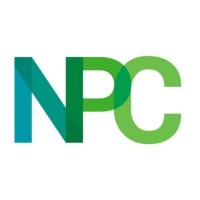
Fast-Track to Financing Program
Natural Products Canada (NPC)- Maximum amount : 25,000 $
- Up to 40% of project cost
- Agriculture, forestry, fishing and hunting
- Manufacturing
- Administrative and support, waste management and remediation services
- Health care and social assistance

Women Entrepreneurship Knowledge Hub
Women Entrepreneurship Knowledge Hub- No Condition
- All industries
Discover Funding for Non-Profits
Find Financial Support Tailored for Non-Profit Organizations
Grants for non-profits provide essential funding for organizations to innovate and adopt sustainable practices. These financial aids support the growth and resilience of the non-profit sector.

TECHNATION — Career Ready Program
TECHNATION- Maximum amount : 7,000 $
- Up to 70% of project cost
- Agriculture, forestry, fishing and hunting
- Manufacturing
- Information and cultural industries
- Professional, scientific and technical services

ECO Canada — Science Horizons Youth Internship (SHI)
ECO Canada- Maximum amount : 25,000 $
- Up to 80% of project cost
- Professional, scientific and technical services

ECO Canada — Youth Employment in Natural Resources YNR
ECO Canada- Maximum amount : 20,000 $
- Up to 75% of project cost
- Agriculture, forestry, fishing and hunting
- Mining, quarrying, and oil and gas extraction
- Professional, scientific and technical services
- Management of companies and enterprises
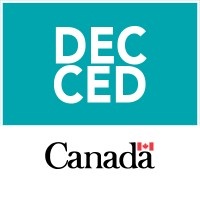
CED — Regional Artificial Intelligence Initiative
Canada Economic Development for Quebec Regions (CED)- Up to 50% of project cost
- Agriculture, forestry, fishing and hunting
- Manufacturing
- Information and cultural industries

Economic Development & Growth in Employment (EDGE) Incentive Program
City of Toronto- From $3,000,000 to $10,000,000
- Up to 77% of project cost
- Manufacturing
- Wholesale trade
- Information and cultural industries
- Professional, scientific and technical services
Discover how much grant funding is available for your business
Subsidize your projects with grants!
Use our free grant estimator to quickly identify the available grant amounts for which your company may be eligible.

Innovative Projects Program
Hydro-Québec- Maximum amount : 12,000,000 $
- Up to 75% of project cost
- Agriculture, forestry, fishing and hunting
- Construction
- Manufacturing
- Wholesale trade

- Maximum amount : 500,000 $
- Up to 50% of project cost
- All industries

Artificial Intelligence for Canadian Energy Innovation
Natural Resources Canada (NRCan)- From $500,000 to $1,500,000
- Up to 75% of project cost
- Utilities
- Manufacturing
- Transportation and warehousing
- Professional, scientific and technical services

Futurpreneur
Futurpreneur Canada- From $5,000 to $60,000
- All industries

Technoclimat
Environnement Québec (MELCC)- Maximum amount : 3,000,000 $
- Up to 50% of project cost
- Agriculture, forestry, fishing and hunting
- Utilities
- Construction
- Manufacturing
Access over 4000 different funding opportunities
Try the helloDarwin platform today and find programs that fit your needs
The helloDarwin application makes it easy to unlock grants so your business can grow faster—with less hassle and more impact.

Support program for positioning Quebec alcohol in the SAQ network
Ministère de l'économie, de l'innovation et de l'énergie du Québec (MEIE)- Maximum amount : 1,950,000 $
- Up to 70% of project cost
- Manufacturing
- Retail trade
- Accommodation and food services

NovaScience Program — Support for employment in research and innovation
Gouvernement du Québec- Maximum amount : 30,000 $
- Up to 50% of project cost
- Information and cultural industries
- Professional, scientific and technical services
- Health care and social assistance

Financial assistance for the hiring of a person to integrate a job on a long-term basis
Gouvernement du Québec- No Condition
- Construction
- Other services (except public administration)
- Public administration
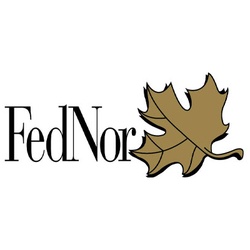
Regional Defence Investment Initiative – Northern Ontario
Federal Economic Development Agency for Northern Ontario (FedNor)- Up to 100% of project cost
- Mining, quarrying, and oil and gas extraction
- Construction
- Manufacturing
- Information and cultural industries
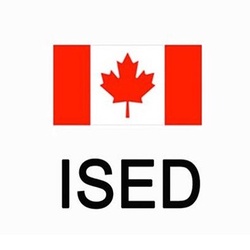
Canada Small Business Financing Loan (CSBFL)
Innovation Canada- Maximum amount : 1,000,000 $
- All industries
Download the official 2026 grants guide
Access key insights to maximize your grant funding opportunities
Understand the different funding programs and find the best options for your business.

Advancing Accessibility Standards Research
Accessibility Standards Canada- No Condition
- Transportation and warehousing
- Information and cultural industries
- Finance and insurance
- Public administration

CCC — Global Bid Opportunity Finder (GBOF)
Canadian Commercial Corporation (CCC)- No Condition
- All industries

Biofood Innovation Program Component 2 – Applied research, experimental development and technological adaptation
Ministry of Agriculture, Fisheries and Food (MAPAQ)- From $25,000 to $254,000
- Up to 90% of project cost
- Agriculture, forestry, fishing and hunting
- Manufacturing

Abandoned Boats Program - Assessment and Removals (A&R) component
Transport Canada- Maximum amount : 250,000 $
- Up to 100% of project cost
- Transportation and warehousing
- Administrative and support, waste management and remediation services
- Public administration

Energir — Energy efficiency program – Feasibility study
Energir- Maximum amount : 1,000,000 $
- Up to 50% of project cost
- Manufacturing
- Educational services
- Health care and social assistance
- Accommodation and food services
Find tailored funding for your business
Discover more grants on the helloDarwin platform
Look through over 4,000 grants, tax credits, loans and more financial aid on the helloDarwin application.

Addressing Racism and Discrimination in Canada’s Health Systems Program
Health Canada- Maximum amount : 1,000,000 $
- Educational services
- Health care and social assistance

African Swine Fever Industry Preparedness Program (ASFIPP) - Prevention and Preparedness Stream
Agriculture and Agri-Food Canada (AAFC)- No Condition
- Agriculture, forestry, fishing and hunting
- Manufacturing

Canada Council for the Arts —
Canada Council for the Arts (CCA)- Maximum amount : 100,000 $
- Information and cultural industries
- Arts, entertainment and recreation

Aboriginal Community Safety Development Contribution Program (ACSDCP)
Public Safety Canada (PSC)- Maximum amount : 1,000,000 $
- Up to 100% of project cost
- Educational services
- Health care and social assistance
- Public administration

Commerce-Montreal
City of Montreal (MTL)- Maximum amount : 50,000 $
- Up to 40% of project cost
- Retail trade
- Accommodation and food services
Tired of scrolling through all these programs?
Filter grants relevant for your company on the helloDarwin platform
Sort over 4,000 business funds by your industry, projects and location with helloDarwin's free app.

Healthy Eating Program Component 3 – Support for activities and structural projects
Ministry of Agriculture, Fisheries and Food (MAPAQ)- From $40,000 to $300,000
- Up to 70% of project cost
- Agriculture, forestry, fishing and hunting
- Manufacturing

Supporting the Canadian Red Cross' Urgent Relief Efforts Related to COVID-19, Floods and Wildfires
Public Safety Canada (PSC)- No Condition
- Health care and social assistance
- Other services (except public administration)
- Public administration

Funding for customized AI training
Scale AI Cluster- From $5,000 to $1,000,000
- Professional, scientific and technical services

Energir — Energy efficiency program – Implementation of efficiency measures
Energir- From $1,000 to $1,000,000
- Up to 50% of project cost
- All industries

Charge+
Propulsion Quebec- Maximum amount : 100,000 $
- Up to 50% of project cost
- Transportation and warehousing
- Public administration
Discover Funding for Non-Profits
Find Financial Support Tailored for Non-Profit Organizations
Grants for non-profits provide essential funding for organizations to innovate and adopt sustainable practices. These financial aids support the growth and resilience of the non-profit sector.

Indigenous and Stakeholder Capacity Fund - Indigenous Capacity Support
Canadian Nuclear Safety Commission- Maximum amount : 200,000 $
- Utilities

Small Craft Harbours Abandoned and Wrecked Vessels Removal Program
Fisheries and Oceans Canada (DFO)- Up to 75% of project cost
- Agriculture, forestry, fishing and hunting
- Other services (except public administration)
- Public administration

International Climate Cooperation Program (ICCP)
Environnement Québec (MELCC)- No Condition
- Professional, scientific and technical services
- Educational services
- Other services (except public administration)
- Public administration

Energir — Energy efficiency program - Efficient construction and renovation
Energir- From $5,000 to $325,000
- Up to 75% of project cost
- Utilities
- Construction
- Manufacturing
- Educational services

SODEC — Support for promotion and distribution – Component 1b
Société de développement des entreprises culturelles (SODEC)- Maximum amount : 50,000 $
- Up to 80% of project cost
- Information and cultural industries
Discover how much grant funding is available for your business
Subsidize your projects with grants!
Use our free grant estimator to quickly identify the available grant amounts for which your company may be eligible.

FAQDD — Action-Climat Quebec
Fonds d'action Québécois pour le développement durable (FAQDD)- Maximum amount : 1,500,000 $
- Up to 80% of project cost
- Agriculture, forestry, fishing and hunting
- Transportation and warehousing
- Professional, scientific and technical services
- Educational services

Youth Take Charge
Canadian Heritage- Maximum amount : 500,000 $
- Up to 75% of project cost
- Educational services
- Arts, entertainment and recreation
- Other services (except public administration)
- Public administration

Community Resilience Fund (CRF)
Public Safety Canada (PSC)- Maximum amount : 35,000,000 $
- Up to 95% of project cost
- Educational services
- Health care and social assistance
- Other services (except public administration)
- Public administration
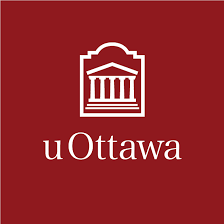
Court Challenges Program (CCP)
University of Ottawa- Maximum amount : 200,000 $
- Other services (except public administration)
- Public administration

Grants and Contributions Program to National Voluntary Organizations (GCP NVO)
Public Safety Canada (PSC)- Maximum amount : 600,000 $
- Other services (except public administration)
- Public administration
Access over 4000 different funding opportunities
Try the helloDarwin platform today and find programs that fit your needs
The helloDarwin application makes it easy to unlock grants so your business can grow faster—with less hassle and more impact.

Communities at Risk, Security Infrastructure Program (SIP)
Public Safety Canada (PSC)- Maximum amount : 100,000 $
- Up to 50% of project cost
- Educational services
- Other services (except public administration)
- Public administration

Financial support to assess your energy use Hydro Quebec
Hydro-Québec- Maximum amount : 50,000 $
- Up to 40% of project cost
- Utilities
- Construction
- Manufacturing
- Wholesale trade

Contribution Program to Combat Serious and Organized Crime (CPCSOC)
Public Safety Canada (PSC)- Maximum amount : 20,000,000 $
- Up to 95% of project cost
- Educational services
- Other services (except public administration)
- Public administration

MAPAQ — Ministerial initiative Proximity — Component 1
Ministry of Agriculture, Fisheries and Food (MAPAQ)- From $7,000 to $50,000
- Up to 70% of project cost
- Agriculture, forestry, fishing and hunting

Aboriginal Aquatic Resource And Oceans Management (AAROM) Program
Fisheries and Oceans Canada (DFO)- No Condition
- Agriculture, forestry, fishing and hunting
- Professional, scientific and technical services
- Educational services
Download the official 2026 grants guide
Access key insights to maximize your grant funding opportunities
Understand the different funding programs and find the best options for your business.

Canada Cultural Investment Fund - Endowment Incentives
Canadian Heritage- From $5,000 to $1,500,000
- Up to 50% of project cost
- Arts, entertainment and recreation

Collaborative Science, Technology and Innovation Program - Collaborative R&D Initiatives
National Research Council Canada (NRC)- No Condition
- Professional, scientific and technical services
- Educational services
- Health care and social assistance
- Public administration

Venture for Canada — Internship Program
Venture for Canada- Maximum amount : 7,000 $
- Up to 50% of project cost
- All industries

Renewable Natural Gas Production Support Program — Stream 1
Gouvernement du Québec- Maximum amount : 300,000 $
- Up to 75% of project cost
- Mining, quarrying, and oil and gas extraction
- Utilities

Indigenous Economic Development Fund — Regional Partnership Grants Program
Government of Ontario- No Condition
- Mining, quarrying, and oil and gas extraction
Find tailored funding for your business
Discover more grants on the helloDarwin platform
Look through over 4,000 grants, tax credits, loans and more financial aid on the helloDarwin application.

EnAbling Change Program
Government of Ontario- No Condition
- All industries

Heavy Urban Search and Rescue (HUSAR)
Public Safety Canada (PSC)- Maximum amount : 6,250,000 $
- Up to 75% of project cost
- Public administration

Financial Assistance Program for the Promotion of French – stream 1
Office québécois de la langue française (OQLF)- Maximum amount : 100,000 $
- Up to 75% of project cost
- Wholesale trade
- Retail trade
- Information and cultural industries
- Professional, scientific and technical services

Financial Assistance Program for the Promotion of French – stream 2
Office québécois de la langue française (OQLF)- Maximum amount : 125,000 $
- Up to 75% of project cost
- All industries

Museum Assistance Program - Exhibition Circulation Fund
Canadian Heritage- Maximum amount : 15,000 $
- Up to 70% of project cost
- Information and cultural industries
- Educational services
- Arts, entertainment and recreation
Tired of scrolling through all these programs?
Filter grants relevant for your company on the helloDarwin platform
Sort over 4,000 business funds by your industry, projects and location with helloDarwin's free app.

Regional defence investment initiative (RDII) – Quebec
Canada Economic Development for Quebec Regions (CED)- Up to 90% of project cost
- Manufacturing
- Professional, scientific and technical services
- Public administration

Acting to support growth
City of Montreal (MTL)- Maximum amount : 270,000 $
- Other services (except public administration)
- Public administration

Financial support for the integration of foreign-trained employees
Gouvernement du Québec- Up to 70% of project cost
- All industries

Greater Montreal Climate Fund — 2025-2026 Call for projects
Greater Montreal Climate Fund- Maximum amount : 50,000 $
- Up to 80% of project cost
- Educational services
- Health care and social assistance
- Other services (except public administration)
- Public administration

Regional Tariff Response Initiative (RTRI) – Atlantic Canada
Government of Canada- Maximum amount : 1,000,000 $
- Up to 25% of project cost
- Manufacturing
- Wholesale trade
- Transportation and warehousing
- Other services (except public administration)
Discover Funding for Non-Profits
Find Financial Support Tailored for Non-Profit Organizations
Grants for non-profits provide essential funding for organizations to innovate and adopt sustainable practices. These financial aids support the growth and resilience of the non-profit sector.

MAPAQ — Prime-Vert — Component 2
Ministry of Agriculture, Fisheries and Food (MAPAQ)- Maximum amount : 100,000 $
- Up to 90% of project cost
- Agriculture, forestry, fishing and hunting

Hosting Program - International Single Sport Events (ISSE)
Canadian Heritage- Up to 35% of project cost
- Arts, entertainment and recreation
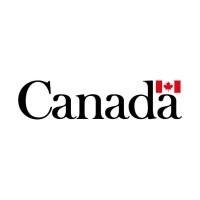
Regional Defence Investment Initiative in Southern Ontario
Federal Economic Development Agency for Southern Ontario (FedDev)- From $125,000 to $10,000,000
- Public administration
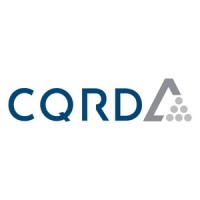
CQRDA — INNOV-R SME
Centre québécois de recherche et de développement de l’aluminium (CQRDA)- Maximum amount : 450,000 $
- Up to 50% of project cost
- Utilities
- Manufacturing
- Professional, scientific and technical services

Remission of tariffs that apply on certain goods from the U.S.
Government of Canada- No Condition
- All industries
Discover how much grant funding is available for your business
Subsidize your projects with grants!
Use our free grant estimator to quickly identify the available grant amounts for which your company may be eligible.

Magazine — Aid to Publishers
Canadian Heritage- Maximum amount : 1,500,000 $
- Up to 75% of project cost
- Information and cultural industries

Indigenous and Stakeholder Capacity Fund - Regulatory Policy Dialogue
Canadian Nuclear Safety Commission- Maximum amount : 30,000 $
- Mining, quarrying, and oil and gas extraction
- Utilities
- Public administration

Indigenous and Stakeholder Capacity Fund - Engagement and Collaboration Support
Canadian Nuclear Safety Commission- No Condition
- Utilities

REGI — Business Scale-up and Productivity — CED (QC) — Not-for-profit
Canada Economic Development for Quebec Regions (CED)- Up to 50% of project cost
- Manufacturing
- Information and cultural industries

Northern Integrated Commercial Fisheries Initiative (NICFI) - Expansion and Diversification
Fisheries and Oceans Canada (DFO)- Up to 90% of project cost
- Agriculture, forestry, fishing and hunting
Access over 4000 different funding opportunities
Try the helloDarwin platform today and find programs that fit your needs
The helloDarwin application makes it easy to unlock grants so your business can grow faster—with less hassle and more impact.

Northern Integrated Commercial Fisheries Initiative (NICFI) - Aquaculture Development
Fisheries and Oceans Canada (DFO)- Up to 90% of project cost
- Agriculture, forestry, fishing and hunting

Canadian Apprenticeship Strategy (CAS) - Union Training and Innovation (UTIP))
Employment and Social Development Canada (ESDC)- No Condition
- Construction
- Manufacturing

Social Economy Support Fund
Social Economy Mauricie- Maximum amount : 20,000 $
- Up to 80% of project cost
- Information and cultural industries
- Educational services
- Health care and social assistance
- Arts, entertainment and recreation

Digital Citizen Contribution Program (DCCP)
Canadian Heritage- Maximum amount : 380,000 $
- Information and cultural industries
- Professional, scientific and technical services
- Educational services
- Health care and social assistance

Indigenous Languages and Cultures Program — Northern Aboriginal Broadcasting
Canadian Heritage- Up to 100% of project cost
- Information and cultural industries
- Arts, entertainment and recreation
Download the official 2026 grants guide
Access key insights to maximize your grant funding opportunities
Understand the different funding programs and find the best options for your business.

Indigenous Forestry Initiative
Natural Resources Canada (NRCan)- Maximum amount : 50,000 $
- Agriculture, forestry, fishing and hunting

Rural Economic Development program — Economic Diversification and Competitiveness Stream
Government of Ontario- Maximum amount : 150,000 $
- Up to 50% of project cost
- Retail trade
- Information and cultural industries
- Arts, entertainment and recreation
- Public administration

Canada Periodical Fund — Business Innovation
Canadian Heritage- Maximum amount : 500,000 $
- Up to 75% of project cost
- Information and cultural industries

Critical Minerals Research, Development and Demonstration Program
National Research Council Canada (NRC)- No Condition
- Mining, quarrying, and oil and gas extraction

Universal Broadband Fund (UBF)
Innovation Canada- Up to 90% of project cost
- Information and cultural industries
Find tailored funding for your business
Discover more grants on the helloDarwin platform
Look through over 4,000 grants, tax credits, loans and more financial aid on the helloDarwin application.

SEAO electronic tendering system
Secrétariat du Conseil du Trésor du Québec (SCT)- No Condition
- All industries

Assault-Style Firearms Compensation Program (ASFCP)
Public Safety Canada (PSC)- No Condition
- Wholesale trade
- Retail trade
- Other services (except public administration)
- Public administration

Regional Economic Growth through Innovation (REGI) — Business Scale-up and Productivity — ACOA
Atlantic Canada Opportunities Agency (ACOA)- No Condition
- Manufacturing
- Information and cultural industries
- Arts, entertainment and recreation

MAPAQ — Food Processing Program — Subcomponent 4.2 - Regional, sectoral and environmental challenges facing slaughterhouses and cheese dairies
Ministry of Agriculture, Fisheries and Food (MAPAQ)- From $7,500 to $150,000
- Up to 50% of project cost
- Manufacturing

CCAA — Student Work Placement Program (SWPP)
Canadian Council for Aviation & Aerospace (CCAA)- Maximum amount : 7,000 $
- Up to 70% of project cost
- Transportation and warehousing
Tired of scrolling through all these programs?
Filter grants relevant for your company on the helloDarwin platform
Sort over 4,000 business funds by your industry, projects and location with helloDarwin's free app.
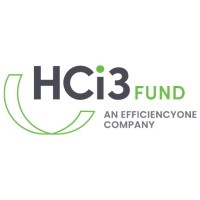
Accelerating to Zero Grant Program
Halifax Climate Investment, Innovation and Impact Fund (HCi3)- Maximum amount : 75,000 $
- Up to 80% of project cost
- Utilities
- Construction
- Transportation and warehousing

Canada Arts Training Fund (CATF)
Canadian Heritage- Up to 100% of project cost
- Arts, entertainment and recreation

PADAAR — Measure 4051 – Innovation and testing
Ministry of Agriculture, Fisheries and Food (MAPAQ)- Maximum amount : 10,000 $
- Up to 50% of project cost
- Agriculture, forestry, fishing and hunting

Support program for economic development projects (PAPDE) — Component 2 : Support for the development of strategic sectors and regions
Gouvernement du Québec- Maximum amount : 1,000,000 $
- Up to 60% of project cost
- Manufacturing
- Information and cultural industries
- Professional, scientific and technical services
- Educational services

Youth Employment and Skills Program
Agriculture and Agri-Food Canada (AAFC)- Maximum amount : 14,000 $
- Up to 50% of project cost
- Agriculture, forestry, fishing and hunting
Discover Funding for Non-Profits
Find Financial Support Tailored for Non-Profit Organizations
Grants for non-profits provide essential funding for organizations to innovate and adopt sustainable practices. These financial aids support the growth and resilience of the non-profit sector.

On-road Transportation Decarbonization — Demonstration Projects
Natural Resources Canada (NRCan)- From $1,000,000 to $5,000,000
- Up to 75% of project cost
- Utilities
- Manufacturing
- Transportation and warehousing
- Professional, scientific and technical services

Celebrate Canada Funding Program
Canadian Heritage- Maximum amount : 50,000 $
- Up to 100% of project cost
- Educational services
- Arts, entertainment and recreation
- Other services (except public administration)
- Public administration

Canada Media Fund (CMF) - Changing Narratives Fund (CNF)
Canadian Heritage- No Condition
- Information and cultural industries

Tourism Growth Program in Northern Ontario
Federal Economic Development Agency for Northern Ontario (FedNor)- Maximum amount : 250,000 $
- Up to 15% of project cost
- Accommodation and food services

FedDev Ontario — Economic Development Initiative (Southern Ontario) — Not-For-Profit
Federal Economic Development Agency for Southern Ontario (FedDev)- No Condition
- Manufacturing
- Information and cultural industries
- Educational services
- Health care and social assistance
Discover how much grant funding is available for your business
Subsidize your projects with grants!
Use our free grant estimator to quickly identify the available grant amounts for which your company may be eligible.

Anti-Racism Action Program
Canadian Heritage- Maximum amount : 500,000 $
- Information and cultural industries
- Educational services
- Health care and social assistance
- Arts, entertainment and recreation

Critical Minerals Infrastructure Fund – Shovel ready Stream
Government of Canada- Maximum amount : 100,000,000 $
- Up to 50% of project cost
- Mining, quarrying, and oil and gas extraction
- Utilities
- Transportation and warehousing
- Public administration

Abandoned Boats Program - Education, Awareness, and Research (EA&R) component
Transport Canada- No Condition
- Transportation and warehousing
- Professional, scientific and technical services
- Administrative and support, waste management and remediation services
- Educational services

On-road Transportation Decarbonization — R&D Projects
Natural Resources Canada (NRCan)- From $500,000 to $1,500,000
- Up to 75% of project cost
- Utilities
- Manufacturing
- Transportation and warehousing
- Professional, scientific and technical services

DEL — Expertise Financing Grant
Développement économique de l'agglomération de Longueuil (DEL)- Maximum amount : 100,000 $
- Up to 50% of project cost
- Manufacturing
- Transportation and warehousing
- Professional, scientific and technical services
- Administrative and support, waste management and remediation services
Access over 4000 different funding opportunities
Try the helloDarwin platform today and find programs that fit your needs
The helloDarwin application makes it easy to unlock grants so your business can grow faster—with less hassle and more impact.

MAPAQ — Food Processing Program — Component 1
Ministry of Agriculture, Fisheries and Food (MAPAQ)- From $5,000 to $75,000
- Up to 50% of project cost
- Manufacturing

PADAAR — Measure 4074 – Relief group
Ministry of Agriculture, Fisheries and Food (MAPAQ)- Maximum amount : 5,000 $
- Up to 70% of project cost
- Agriculture, forestry, fishing and hunting

MT Lab — Project Financing Program — Component 2
MT Lab- Maximum amount : 90,000 $
- Up to 75% of project cost
- Accommodation and food services

Efficient Solutions Program — Small Business Component
Hydro-Québec- Minimum amount : 500 $
- Up to 90% of project cost
- All industries

Airport Critical Infrastructure Program (ACIP)
Transport Canada- No Condition
- Transportation and warehousing
Download the official 2026 grants guide
Access key insights to maximize your grant funding opportunities
Understand the different funding programs and find the best options for your business.

Regional partnership and digital transformation agreement for tourism 2022-2025 – Digital development of a company
Tourisme Saguenay–Lac-Saint-Jean- From $5,000 to $25,000
- Up to 25% of project cost
- Arts, entertainment and recreation
- Accommodation and food services

Ecocamionnage Program — Technology acquisition component
Minister of Transport and Sustainable Mobility of Quebec- No Condition
- Transportation and warehousing

Movable Cultural Property Grants
Canadian Heritage- Up to 100% of project cost
- Information and cultural industries
- Arts, entertainment and recreation

Regional Homebuilding Innovation Initiative (RHII) for Northern Ontario
Federal Economic Development Agency for Northern Ontario (FedNor)- Maximum amount : 500,000 $
- Up to 50% of project cost
- All industries

Canada Public Transit Fund (CPTF)
Housing, Infrastructure and Communities Canada- Up to 40% of project cost
- Transportation and warehousing
- Public administration
Find tailored funding for your business
Discover more grants on the helloDarwin platform
Look through over 4,000 grants, tax credits, loans and more financial aid on the helloDarwin application.

CMF — Innovation & Experimentation Program
Canada Media Fund (CMF)- Maximum amount : 1,500,000 $
- Up to 75% of project cost
- Information and cultural industries

SODEC — Support for book and publishing companies – Component 1
Société de développement des entreprises culturelles (SODEC)- Maximum amount : 200,000 $
- Information and cultural industries

Critical Minerals Infrastructure Fund – Preconstruction Stream
Government of Canada- Maximum amount : 50,000,000 $
- Up to 50% of project cost
- Mining, quarrying, and oil and gas extraction
- Utilities
- Transportation and warehousing
- Public administration

Ecocamionnage Program — Acquisition of used heavy vehicles component
Minister of Transport and Sustainable Mobility of Quebec- No Condition
- Transportation and warehousing

EPRTNT Assistance Program
Tourisme Montréal- Minimum amount : 500,000 $
- Up to 80% of project cost
- Arts, entertainment and recreation
- Accommodation and food services
Tired of scrolling through all these programs?
Filter grants relevant for your company on the helloDarwin platform
Sort over 4,000 business funds by your industry, projects and location with helloDarwin's free app.

Sport Support Program - Canadian Sport Centre (CSC))
Canadian Heritage- No Condition
- Arts, entertainment and recreation

Ontario Anti-Hate Security and Prevention Grant (2025-26)
Government of Ontario- From $5,000 to $10,000
- Educational services
- Health care and social assistance
- Arts, entertainment and recreation
- Other services (except public administration)

Financial assistance for infrastructure projects supporting the mining sector (ENIAM)
Gouvernement du Québec- From $100,000 to $1,000,000
- Up to 50% of project cost
- Mining, quarrying, and oil and gas extraction
- Utilities
- Transportation and warehousing
- Information and cultural industries

Regional Artificial Intelligence Initiative (RAII) for Northern Ontario
Federal Economic Development Agency for Northern Ontario (FedNor)- Up to 75% of project cost
- Agriculture, forestry, fishing and hunting
- Mining, quarrying, and oil and gas extraction
- Manufacturing
- Health care and social assistance

Talent Opportunities Program — Student Work Placement Program
Ontario Chamber of Commerce (OCC)- Maximum amount : 7,000 $
- Up to 70% of project cost
- All industries
Discover Funding for Non-Profits
Find Financial Support Tailored for Non-Profit Organizations
Grants for non-profits provide essential funding for organizations to innovate and adopt sustainable practices. These financial aids support the growth and resilience of the non-profit sector.

Digital Skills for Youth Program (DS4Y)
Innovation Canada- Maximum amount : 30,000 $
- Up to 15% of project cost
- Information and cultural industries
- Educational services
- Arts, entertainment and recreation

MT Lab — Project financing program — Component 1: Strategic support
MT Lab- From $5,000 to $12,000
- Up to 75% of project cost
- Accommodation and food services

Hosting Program - International Multisport Games for Aboriginal Peoples and Persons with a Disability (IMGAPPD)
Canadian Heritage- No Condition
- Health care and social assistance
- Arts, entertainment and recreation

Hosting Program - Canada Games
Canadian Heritage- No Condition
- Arts, entertainment and recreation

Ambition-Compétences — Training for resilience and competitiveness in employment
Commission des partenaires du marché du travail (CPMT)- Up to 85% of project cost
- Agriculture, forestry, fishing and hunting
- Manufacturing
- Transportation and warehousing
Discover how much grant funding is available for your business
Subsidize your projects with grants!
Use our free grant estimator to quickly identify the available grant amounts for which your company may be eligible.

Official Languages Support Programs
Canadian Heritage- No Condition
- Information and cultural industries
- Educational services
- Arts, entertainment and recreation
- Other services (except public administration)

Age Well at Home (AWAH) - Scaling Up for Seniors Stream
Employment and Social Development Canada (ESDC)- From $100,000 to $2,000,000
- Health care and social assistance

Entrepreneurial grant
Quebec City- Maximum amount : 25,000 $
- Up to 50% of project cost
- Agriculture, forestry, fishing and hunting
- Manufacturing
- Information and cultural industries
- Finance and insurance

Ecocamionnage Program — Collaborative shared electric delivery project
Minister of Transport and Sustainable Mobility of Quebec- Maximum amount : 2,000,000 $
- Up to 50% of project cost
- Transportation and warehousing
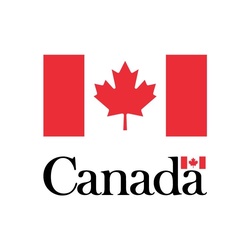
Northern Scientific Training Program (NSTP)
Polar Knowledge Canada (POLAR)- Maximum amount : 6,000 $
- Agriculture, forestry, fishing and hunting
- Professional, scientific and technical services
- Educational services
- Health care and social assistance
Access over 4000 different funding opportunities
Try the helloDarwin platform today and find programs that fit your needs
The helloDarwin application makes it easy to unlock grants so your business can grow faster—with less hassle and more impact.

Arts Abroad — Co-Production
Canada Council for the Arts (CCA)- Maximum amount : 50,000 $
- Up to 50% of project cost
- Arts, entertainment and recreation

Aquatic Ecosystems Restoration Fund
Fisheries and Oceans Canada (DFO)- No Condition
- Agriculture, forestry, fishing and hunting
- Professional, scientific and technical services
- Educational services
- Other services (except public administration)

Northern Integrated Commercial Fisheries Initiative (NICFI) - Harvester Training
Fisheries and Oceans Canada (DFO)- Up to 75% of project cost
- Agriculture, forestry, fishing and hunting

Northern Integrated Commercial Fisheries Initiative (NICFI) - Capacity Building (Business Development)
Fisheries and Oceans Canada (DFO)- No Condition
- Agriculture, forestry, fishing and hunting
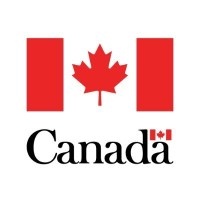
Access to Justice in Both Official Languages Support Fund
Department of Justice Canada- No Condition
- Educational services
- Other services (except public administration)
- Public administration
Download the official 2026 grants guide
Access key insights to maximize your grant funding opportunities
Understand the different funding programs and find the best options for your business.

Ontario 400th Celebrations Program
Ministry of Francophone Affairs- No Condition
- Information and cultural industries
- Arts, entertainment and recreation
- Other services (except public administration)
- Public administration
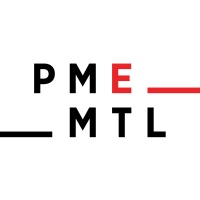
Le Fonds d’initiatives locales (FIL) Village
PME MTL- Maximum amount : 50,000 $
- Retail trade
- Information and cultural industries
- Arts, entertainment and recreation
- Other services (except public administration)

Aquatic Habitat Restoration Fund (AHRF)
Fisheries and Oceans Canada (DFO)- No Condition
- Agriculture, forestry, fishing and hunting

Canada Book Fund Publishers Business Development — Business Planning
Canadian Heritage- Maximum amount : 50,000 $
- Up to 75% of project cost
- Information and cultural industries

Zero Emission Vehicle Infrastructure (ZEVIP) — Delivery Organizations
Natural Resources Canada (NRCan)- Maximum amount : 5,000,000 $
- Up to 50% of project cost
- Public administration
Find tailored funding for your business
Discover more grants on the helloDarwin platform
Look through over 4,000 grants, tax credits, loans and more financial aid on the helloDarwin application.

Zero Emission Vehicle Awareness Initiative — Medium- and Heavy-Duty Vehicles and Clean Fuels
Natural Resources Canada (NRCan)- Maximum amount : 300,000 $
- Up to 50% of project cost
- Utilities
- Manufacturing
- Transportation and warehousing
- Educational services

Extend the employment periods of your staff — Seasonal employment extension component
Gouvernement du Québec- Maximum amount : 5,000 $
- Up to 40% of project cost
- Agriculture, forestry, fishing and hunting
- Arts, entertainment and recreation
- Accommodation and food services

Financial assistance for businesses located in areas affected by major infrastructure projects
Quebec City- Maximum amount : 30,000 $
- Up to 5% of project cost
- All industries

Laurentides Tourism — Regional Partnership and Digital Transformation Agreement in Tourism (EPRTNT) – Digital development of a company
Laurentides Tourism- From $10,000 to $95,000
- Up to 50% of project cost
- Arts, entertainment and recreation
- Accommodation and food services

Clean Tech Internships
Career launcher- Maximum amount : 30,000 $
- Up to 80% of project cost
- Manufacturing
- Retail trade
- Transportation and warehousing
- Professional, scientific and technical services
Tired of scrolling through all these programs?
Filter grants relevant for your company on the helloDarwin platform
Sort over 4,000 business funds by your industry, projects and location with helloDarwin's free app.

Regions and Rurality Fund (RRF) - Component 1 - Support for regional outreach
Gouvernement du Québec- From $100,000 to $3,000,000
- Up to 80% of project cost
- Agriculture, forestry, fishing and hunting
- Utilities
- Construction
- Manufacturing

Indigenous Habitat Participation Program - Capacity-building, Engagement, and Collaboration component
Fisheries and Oceans Canada (DFO)- Up to 15% of project cost
- Agriculture, forestry, fishing and hunting

Financial support program for government initiatives in community and volunteer action
Gouvernement du Québec- No Condition
- Educational services
- Health care and social assistance
- Arts, entertainment and recreation
- Other services (except public administration)

Technology Maturation Program – PSOv2d
Axelys- Maximum amount : 475,000 $
- Up to 80% of project cost
- Professional, scientific and technical services
- Educational services

Education and Awareness Project Funding – Electric Vehicle Test Drives and Charging Education
Natural Resources Canada (NRCan)- No Condition
- Utilities
- Transportation and warehousing
- Professional, scientific and technical services
- Educational services
Discover Funding for Non-Profits
Find Financial Support Tailored for Non-Profit Organizations
Grants for non-profits provide essential funding for organizations to innovate and adopt sustainable practices. These financial aids support the growth and resilience of the non-profit sector.

Propel – Student Work Placement Program
Tourism HR Canada- Maximum amount : 7,000 $
- Up to 50% of project cost
- Arts, entertainment and recreation
- Accommodation and food services
- Other services (except public administration)

Support for commercial arteries — Component 1 - Support for urban revitalization projects
Quebec City- Maximum amount : 25,000 $
- Up to 65% of project cost
- All industries

AGRI Talent
Canadian Agricultural Human Resource Council (CAHRC)- Maximum amount : 7,000 $
- Up to 50% of project cost
- Agriculture, forestry, fishing and hunting

Cyber Security Cooperation Program 2025
Public Safety Canada (PSC)- Maximum amount : 300,000 $
- Up to 75% of project cost
- Professional, scientific and technical services
- Educational services
- Public administration

Celebration and Commemoration Program
Canadian Heritage- Maximum amount : 100,000 $
- Information and cultural industries
- Educational services
- Health care and social assistance
- Arts, entertainment and recreation